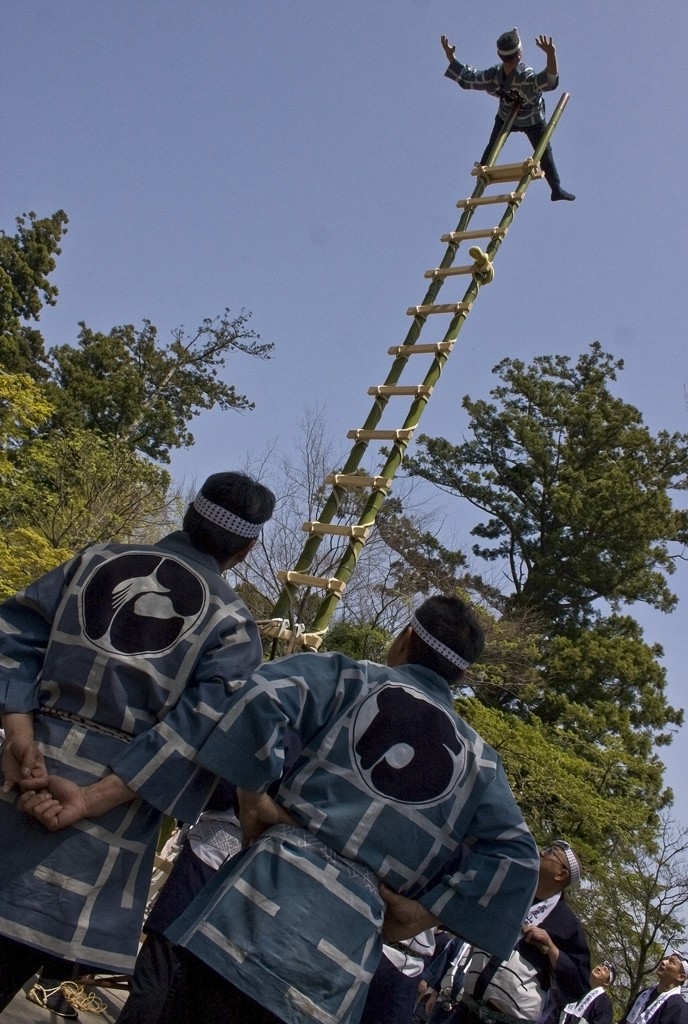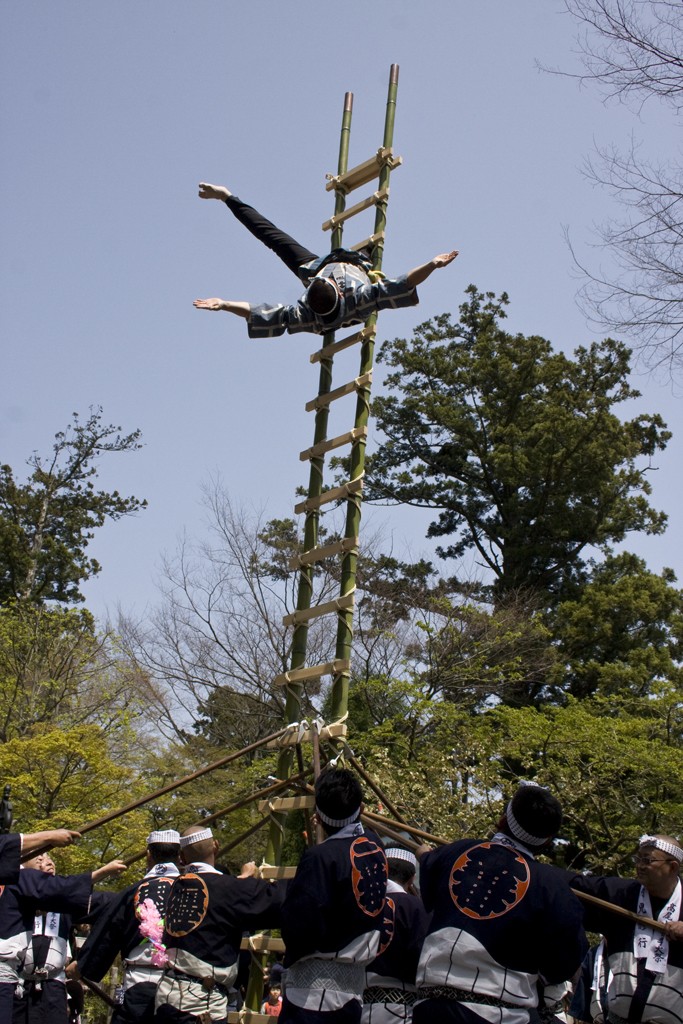I’ve been wanting to see one of these performances of traditional fire-fighting techniques for years, but I always seem to miss them. Last weekend, I finally got to take one in at Mt. Takao’s Spring Festival, and it was really impressive.
Back in the Edo Period (1603-1868), fires were a huge problem in Japan. In Tokyo, they were called the Edo no Hana (flowers of Edo), and could kill tens of thousands of people and burn large sections of the city.

The pole with the white strips on it (below) is called a matoi, and it is actually a fire-fighting device. It would be soaked in water, and the firefighters would spin it around, and the spraying water and fan-effect would put out the flames or stop them from spreading. They are extremely heavy, and the operators, called matoi-mochi were the strongest men in the unit. They would line up on the edge of the roof and one man would weild it until he was exhausted or succumbed to smoke inhalation, and then the next man would take over.

The men who held the ladders were called hashigo-mochi. The poles they carried were called tobiguchi, and here are being used to support the ladder. Modern firefighters try to put out fires, but in the Edo Period, the main work was done by tobi ninsoku, demolition experts, whose job was to use tobiguchi and other tools to destroy nearby buildings, creating firebreaks so that the flames would not spread.
These poses on the ladders aren’t just for show. They were used to let the other firefighters know about wind direction and progress of the fire so that the men below could decide where to build firebreaks and fight the flames most effectively.
If you look carefully, you’ll notice that this guy has a rope around his right foot.
The Takao Festival is held on the third Sunday in April every year. There is a parade of children in Heian Period costumes that starts from the ropeway station near the top of the mountain at 11:00. The ladder display starts at 12:00 at Yakuoin Temple. To get to Mt. Takao, take the Keio Line to Takao-san guchi (be careful because JR Takao Station is pretty far from the trail heads).
Tokyo’s most famous firefighting festival is called the Dezome-shiki, and is held every year on January 6. It has all kinds of high-tech fire-fighting equipment, a demonstration by an elite fire-fighting squad, as well as traditional ladder skills: http://www.jnto.go.jp/eng/indepth/history/traditionalevents/a02_fes_dezome.html
There’s a video of the Dezome-shiki at: http://samuraidave.wordpress.com/category/hikeshi/. The ladder tricks start at about 2:20 into the video.
I found a very interesting-looking book called Taiho-jutsu: Law and Order in the Age of the Samurai online. You can read a very interesting explanation of firefighting in the Edo Period at: http://books.google.com/books?id=g5BP7DGuNFsC&pg=PA13&lpg=PA13&dq=edo+firefighters+ladder&source=bl&ots=s28Zqo2lWb&sig=9EKpL0TC_OltZuXM1v1glr9CIZ4&hl=en&ei=bybzSZaAPNKLkAXWy933Cg&sa=X&oi=book_result&ct=result&resnum=7#PPA13,M1







Like you, I’ve always wanted to get to one of these festivals but have never managed to make it yet! Your pictures make me more determined to get there. How on earth do they do those ladder tricks?
The last one is the BEST picture. The BEST, I tell you.
Suppose in their early twenties men and women enter a highly competitive profession and must endure years of low pay and demanding work that is compensated to a considerable extent by a tournament. ,